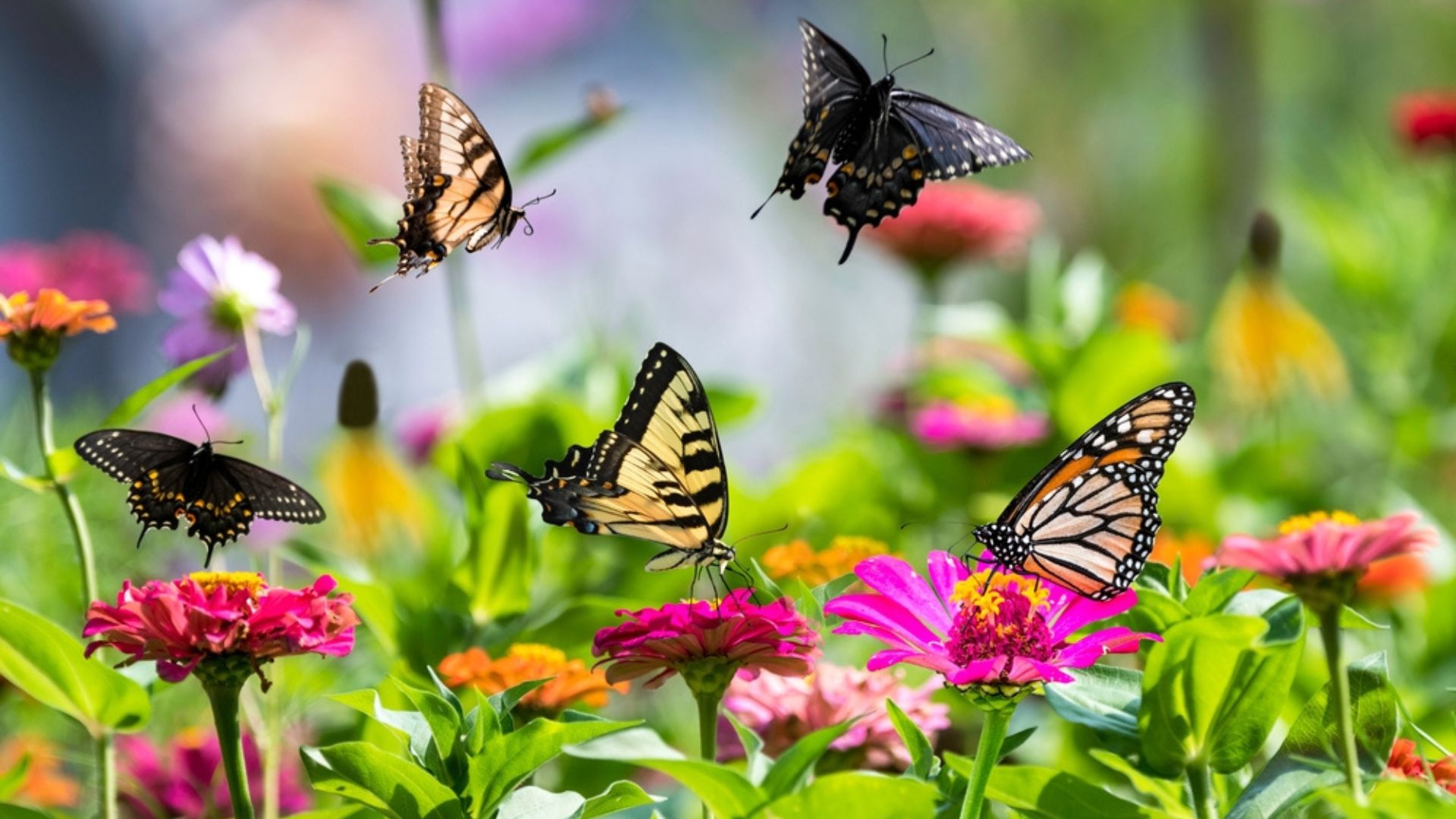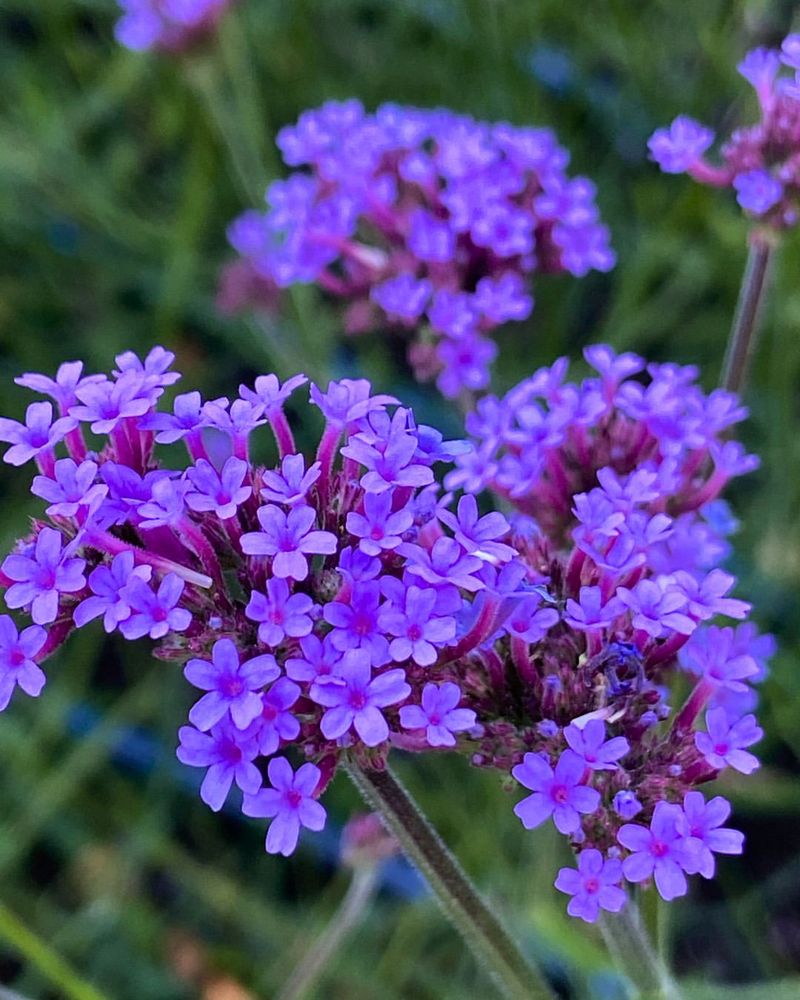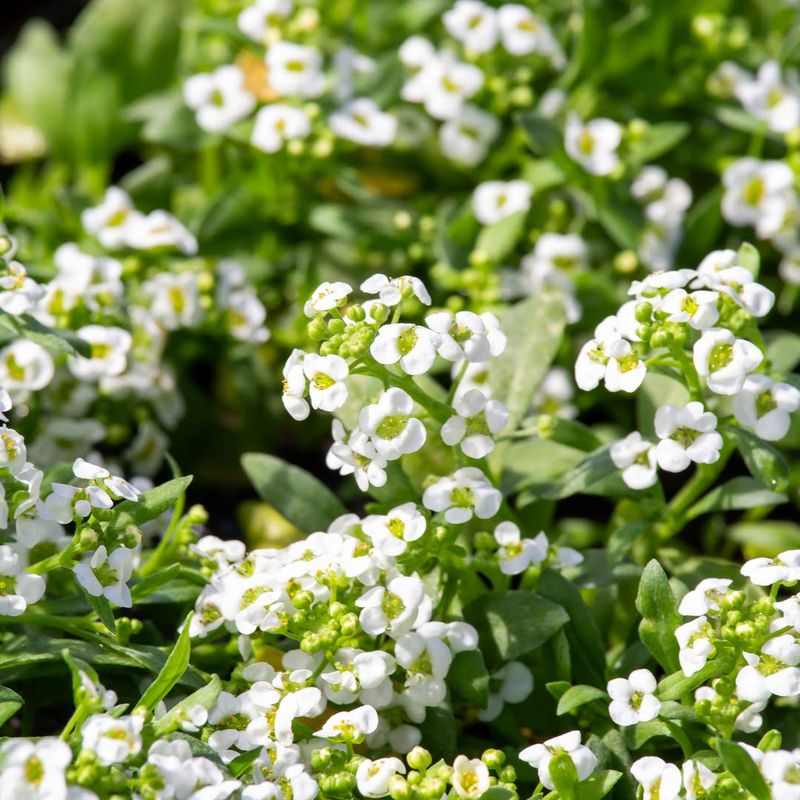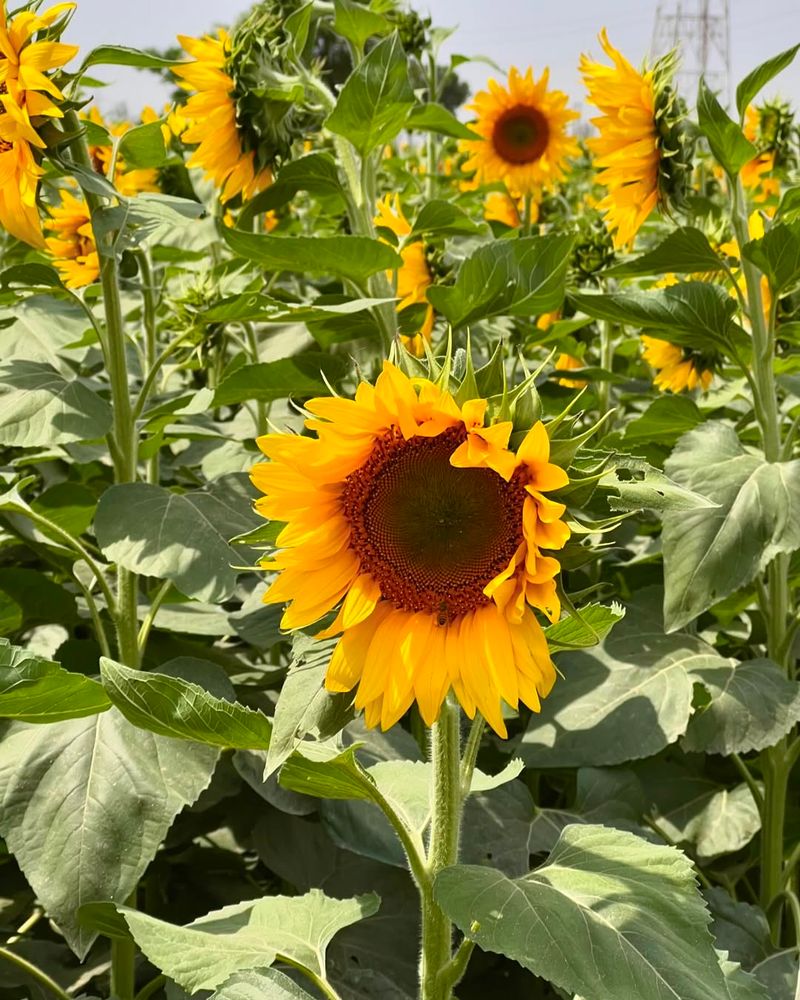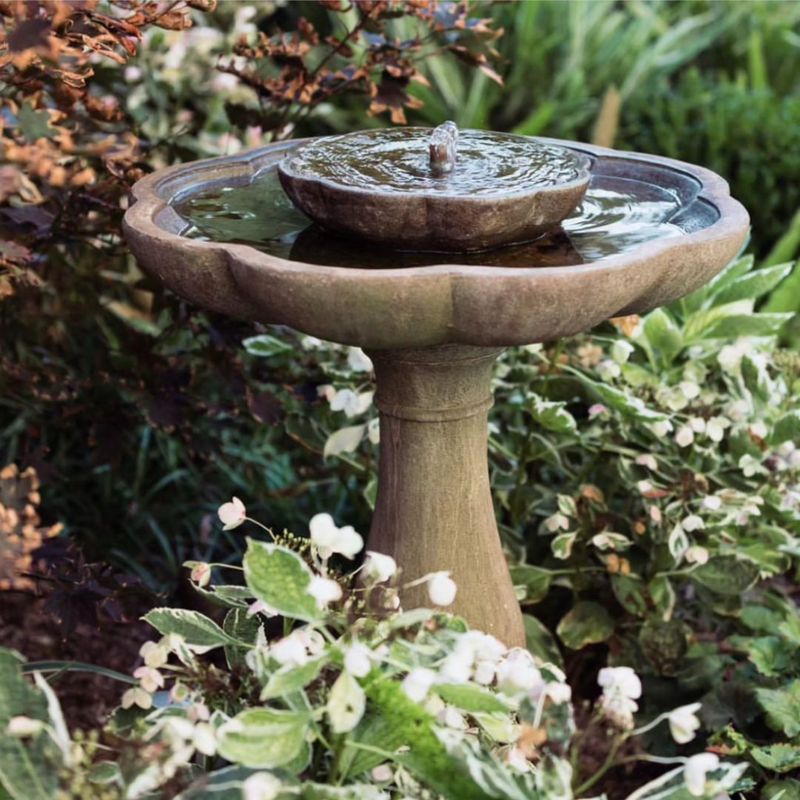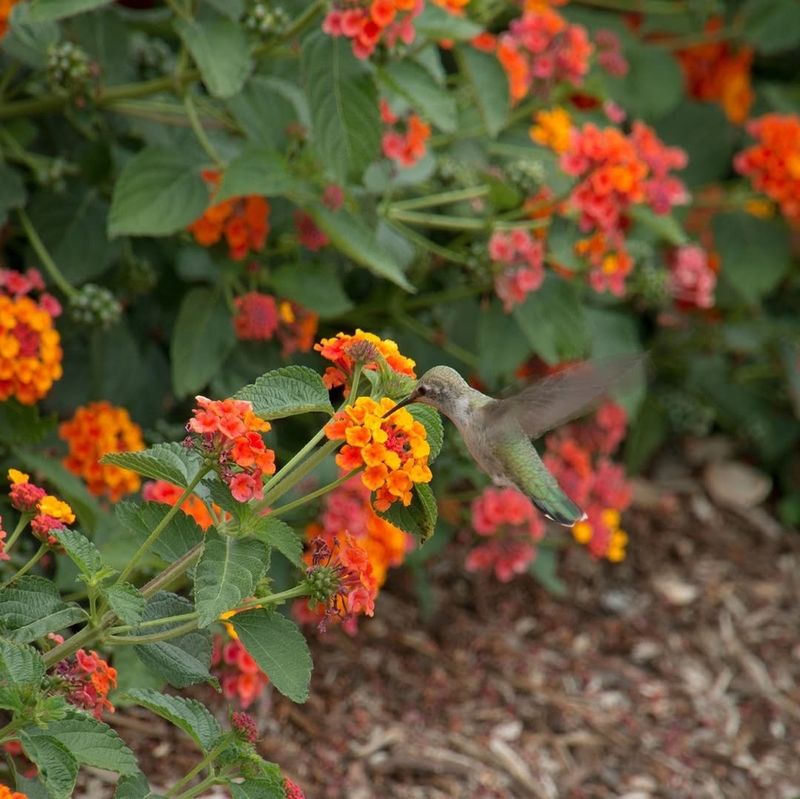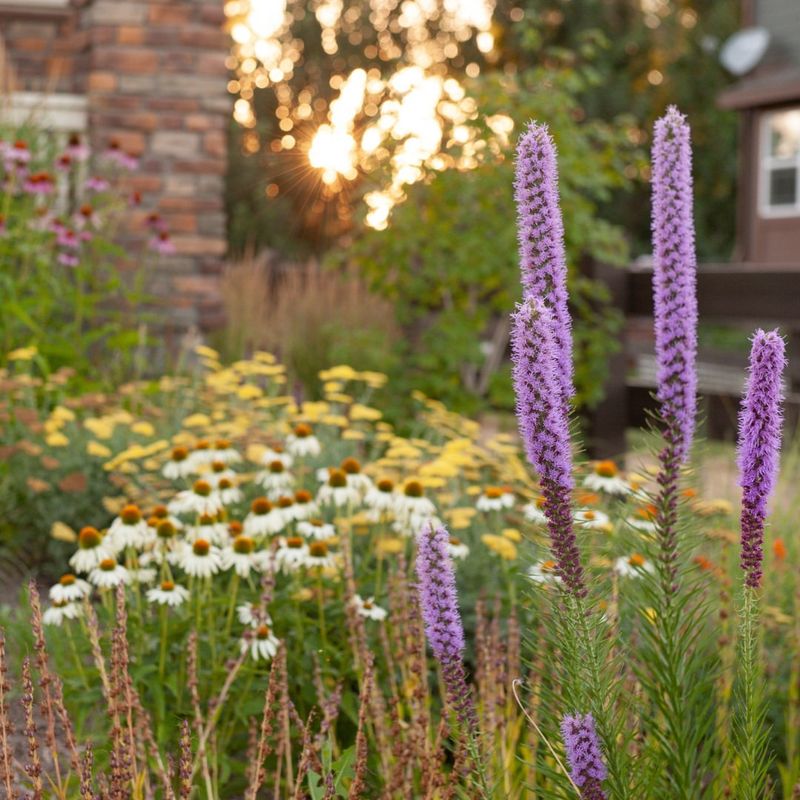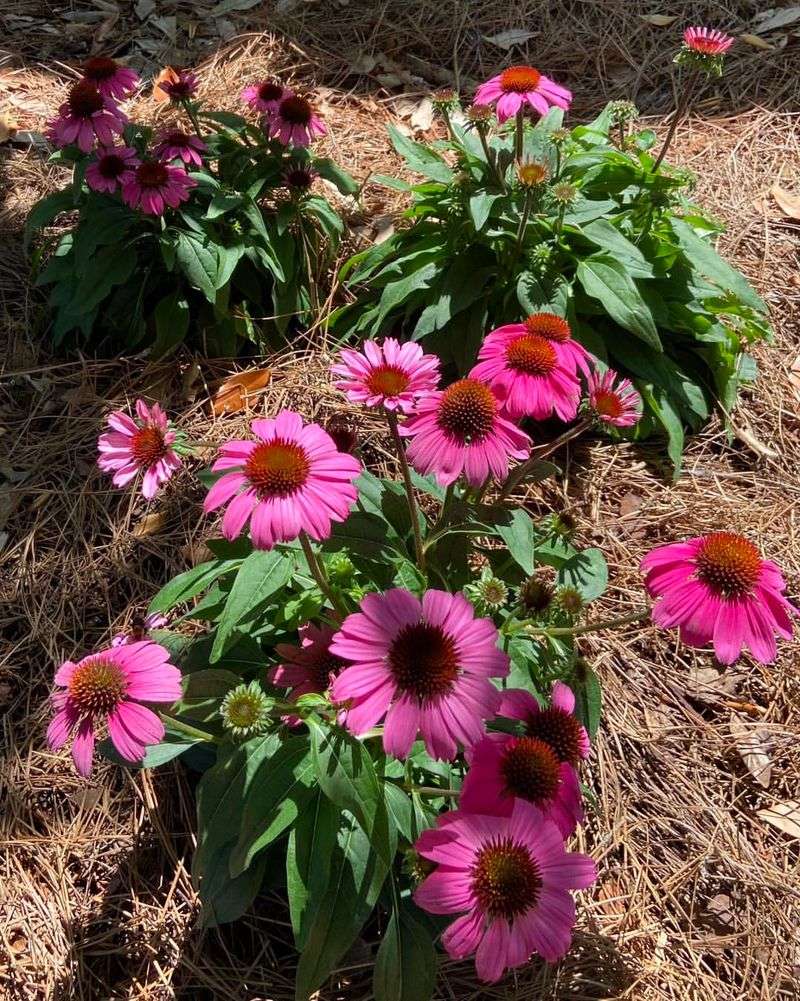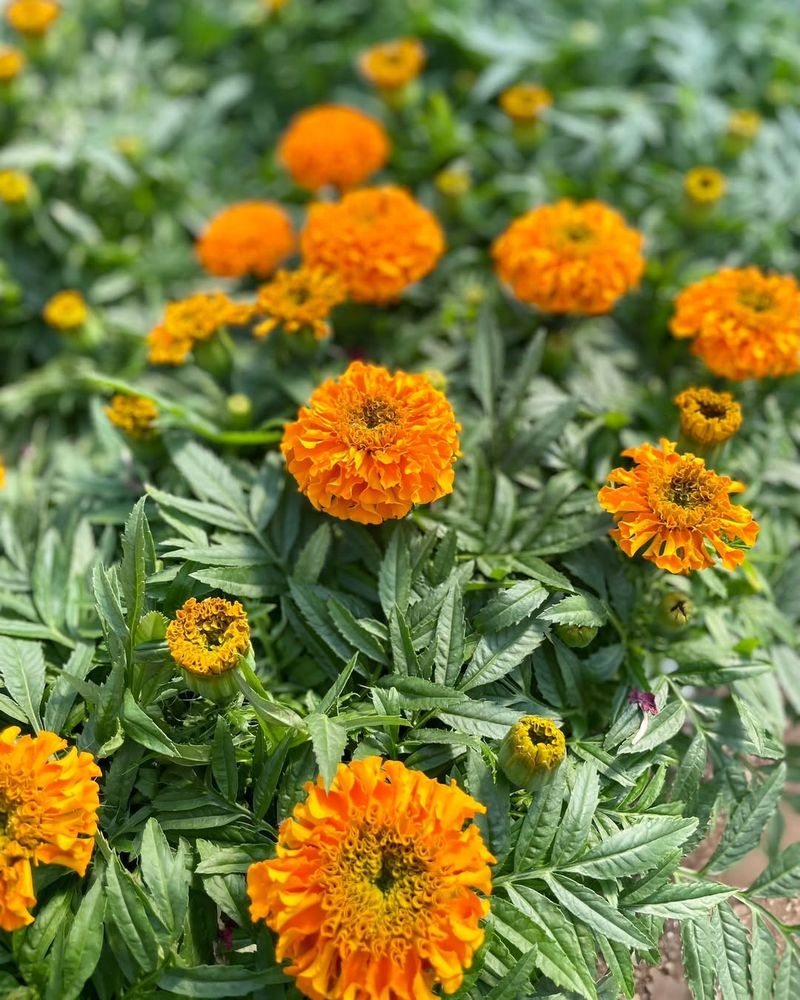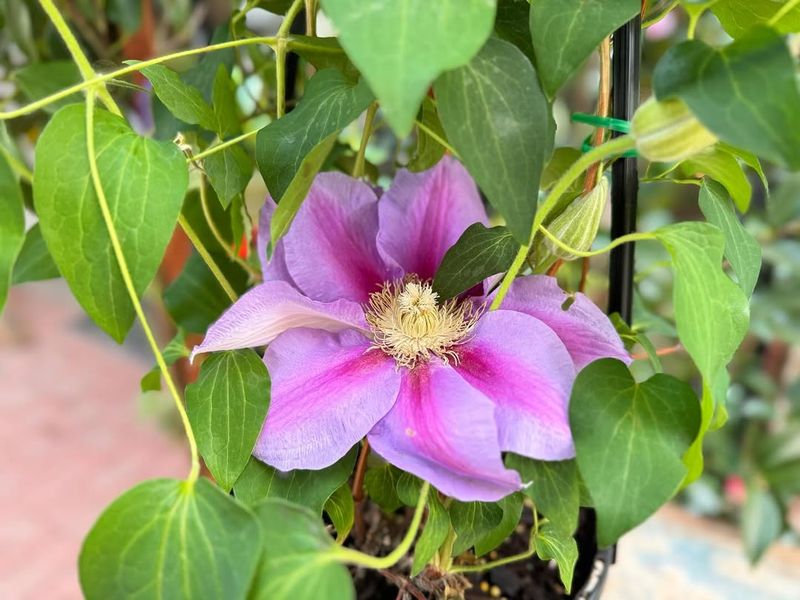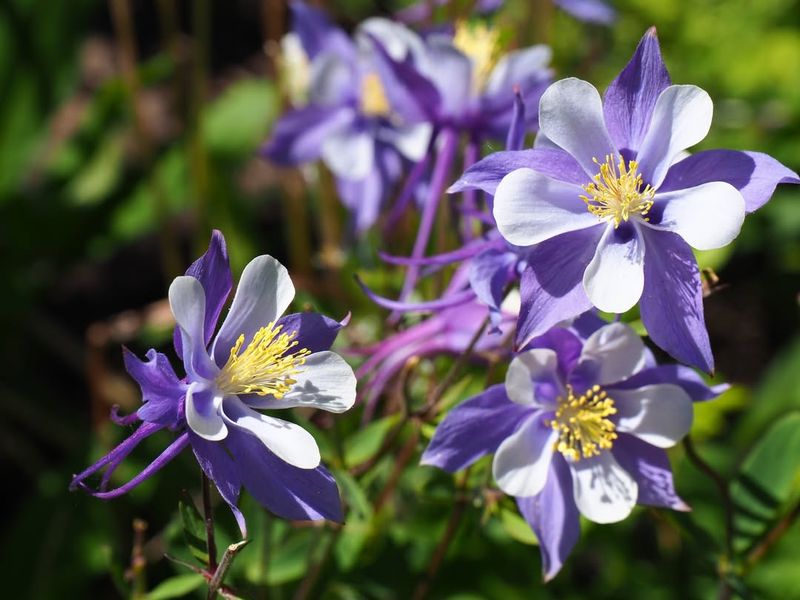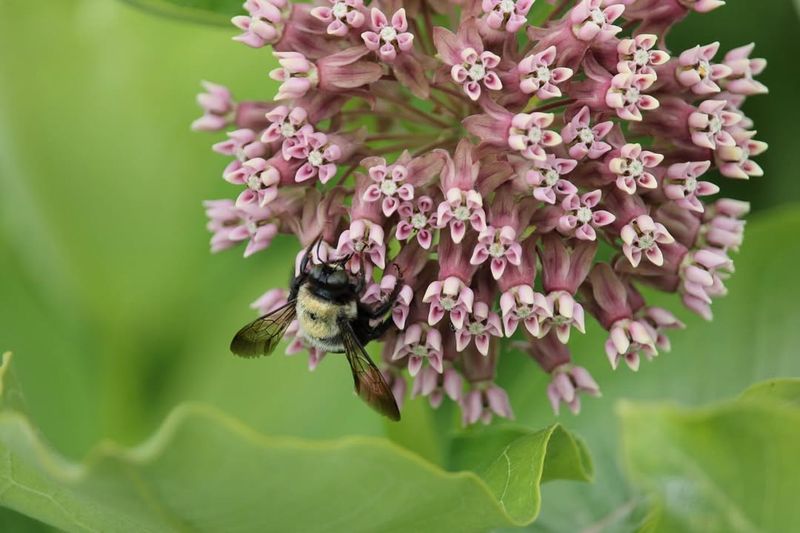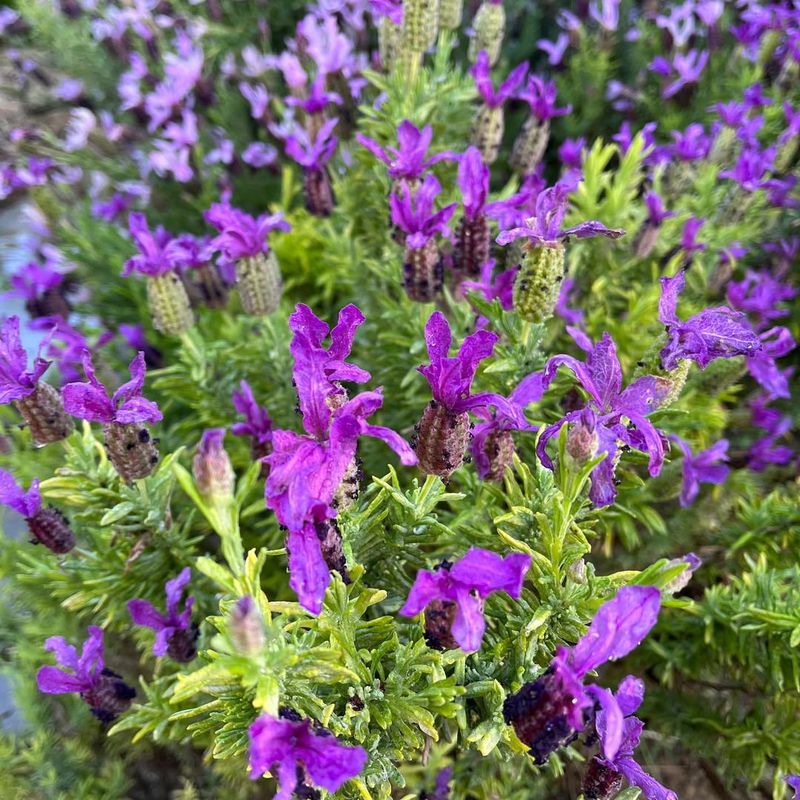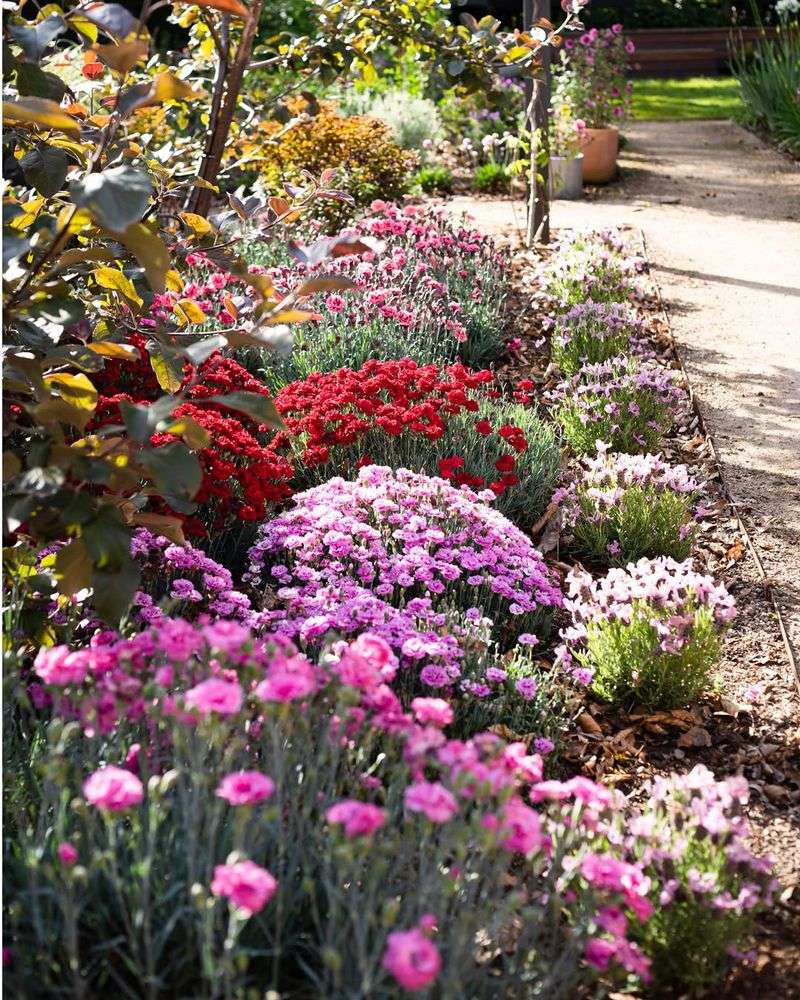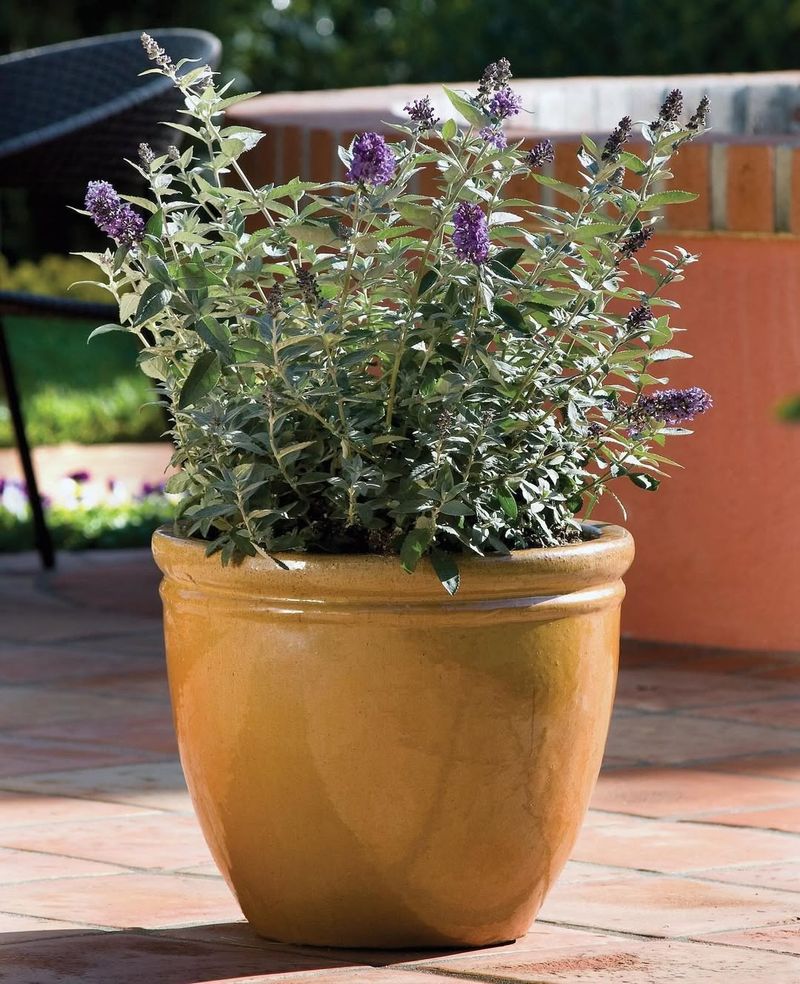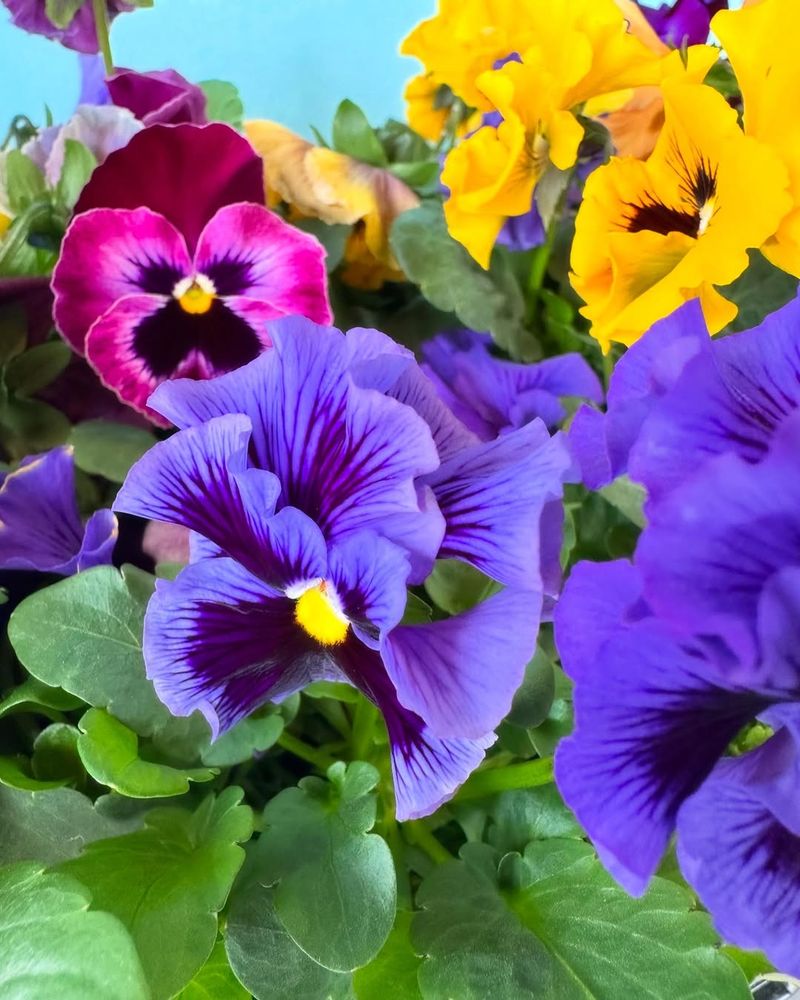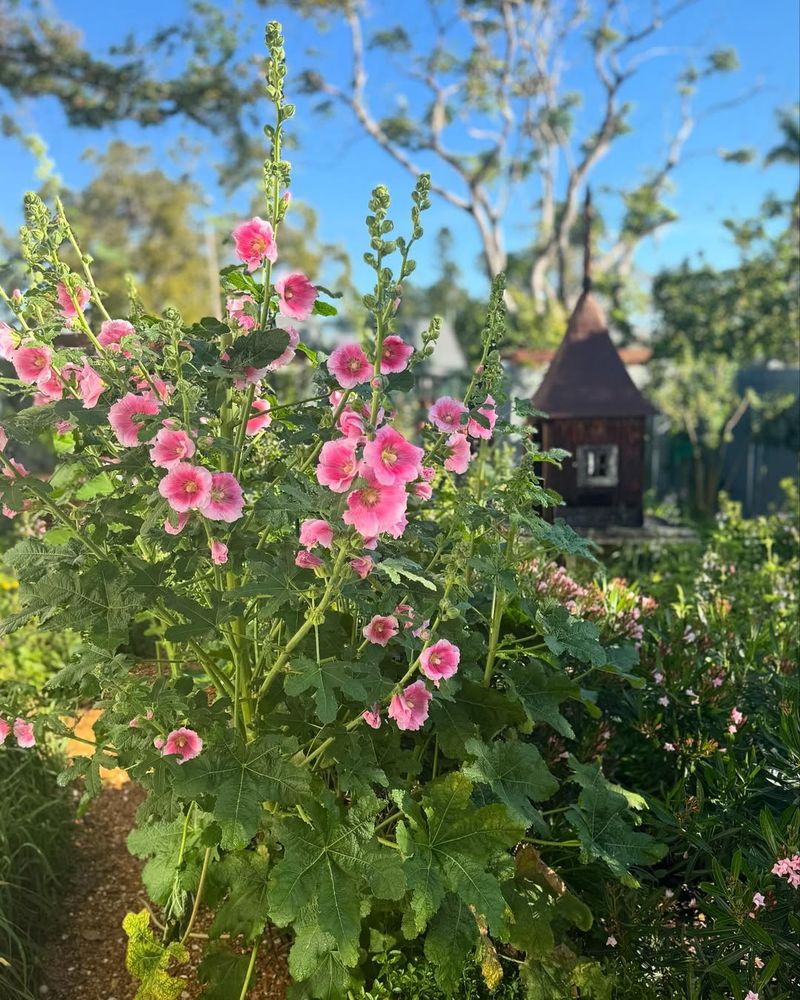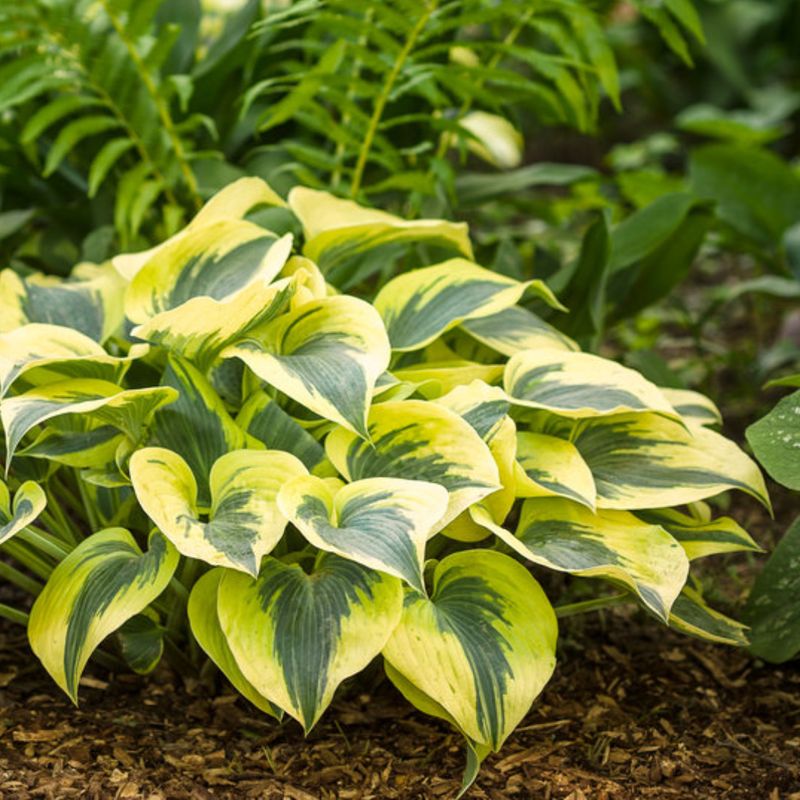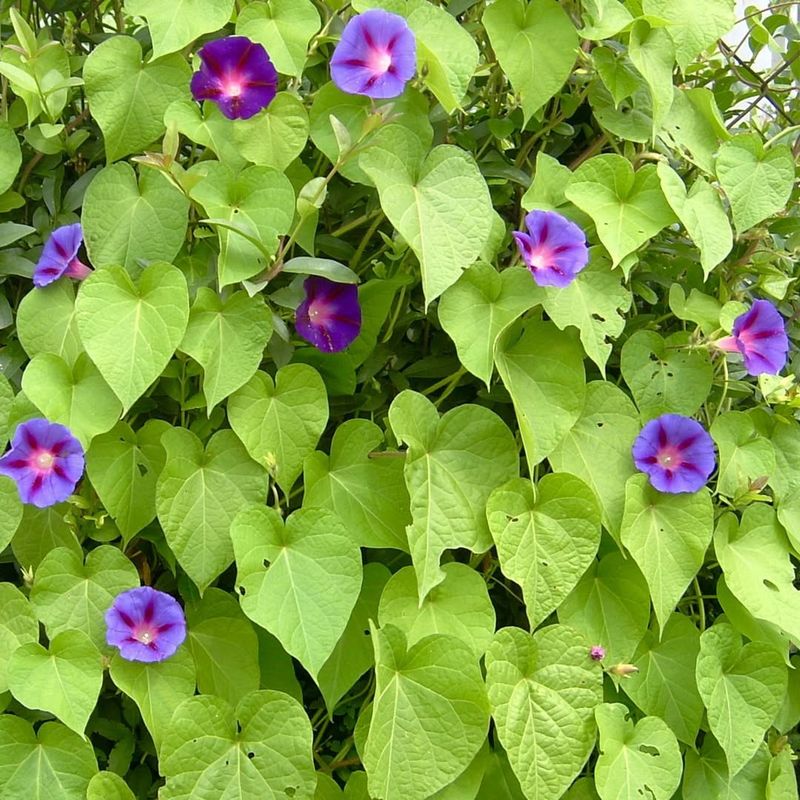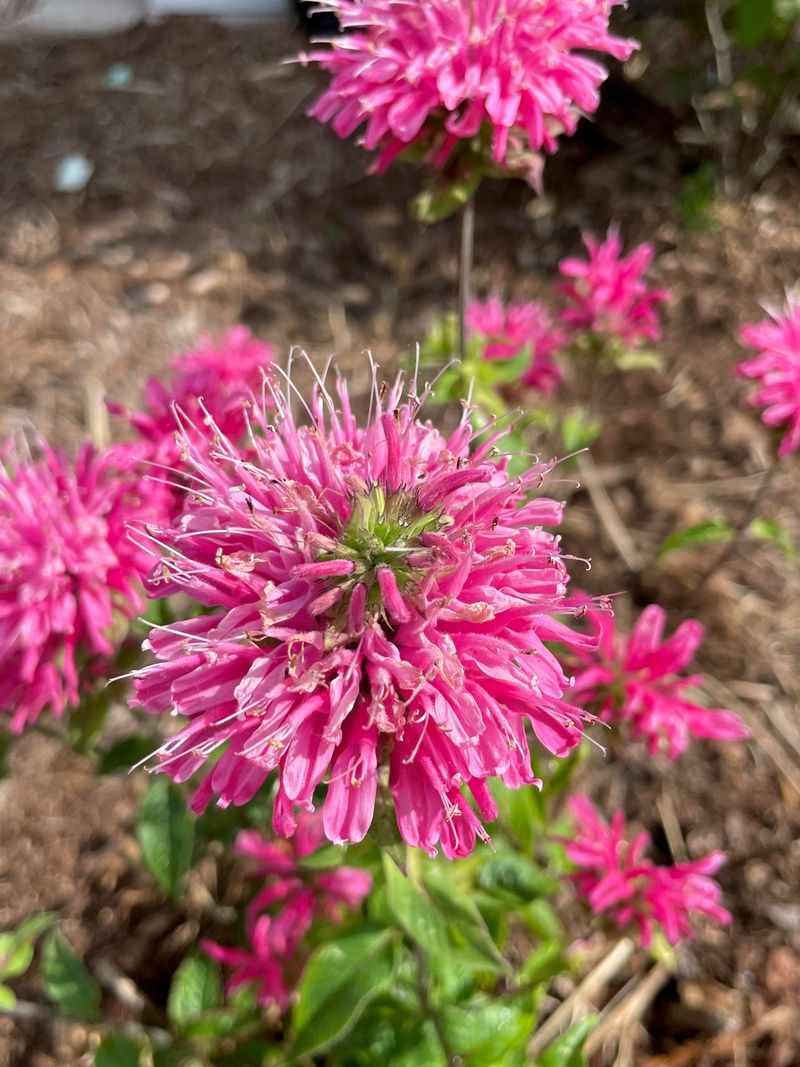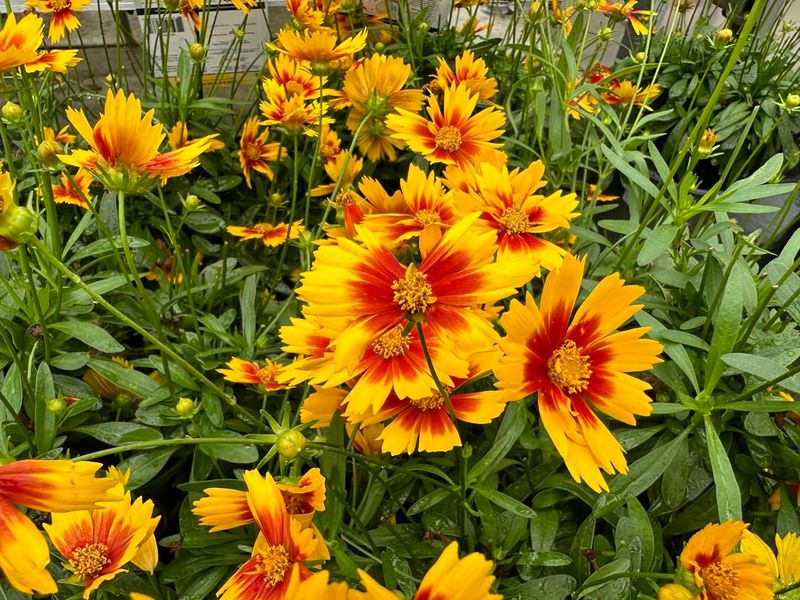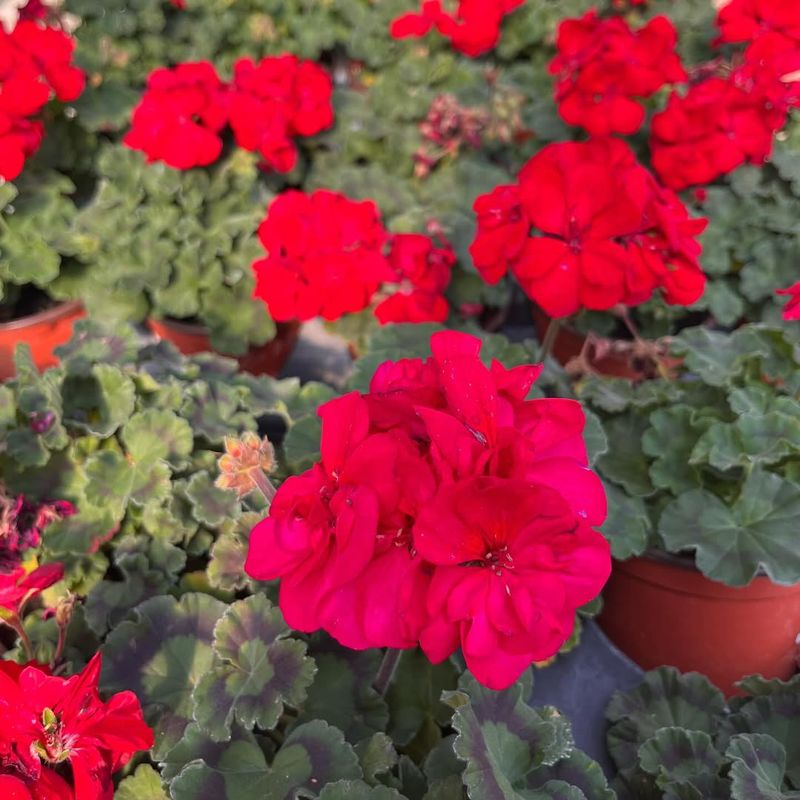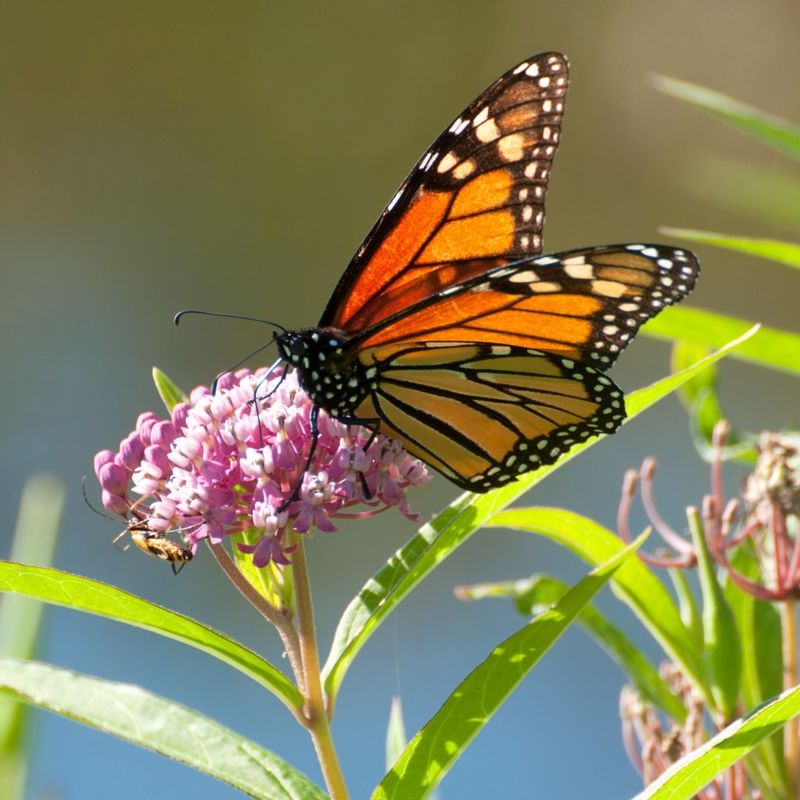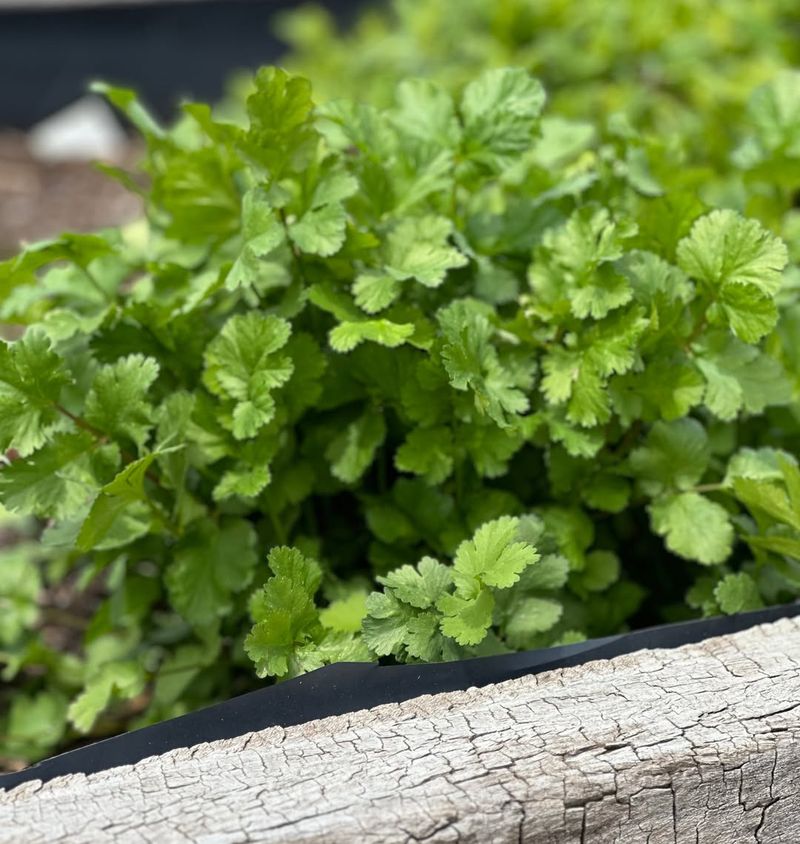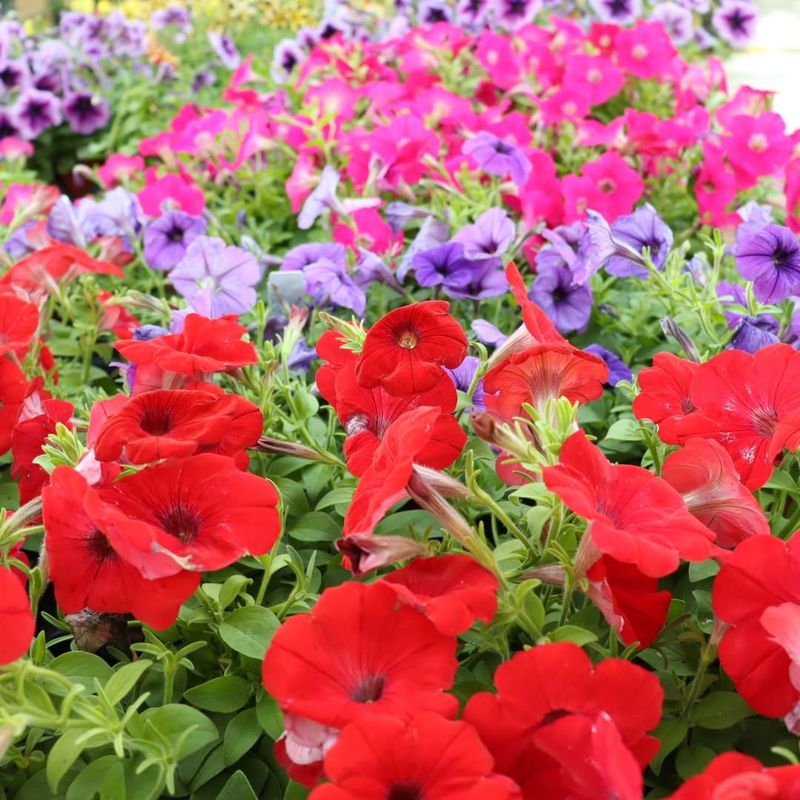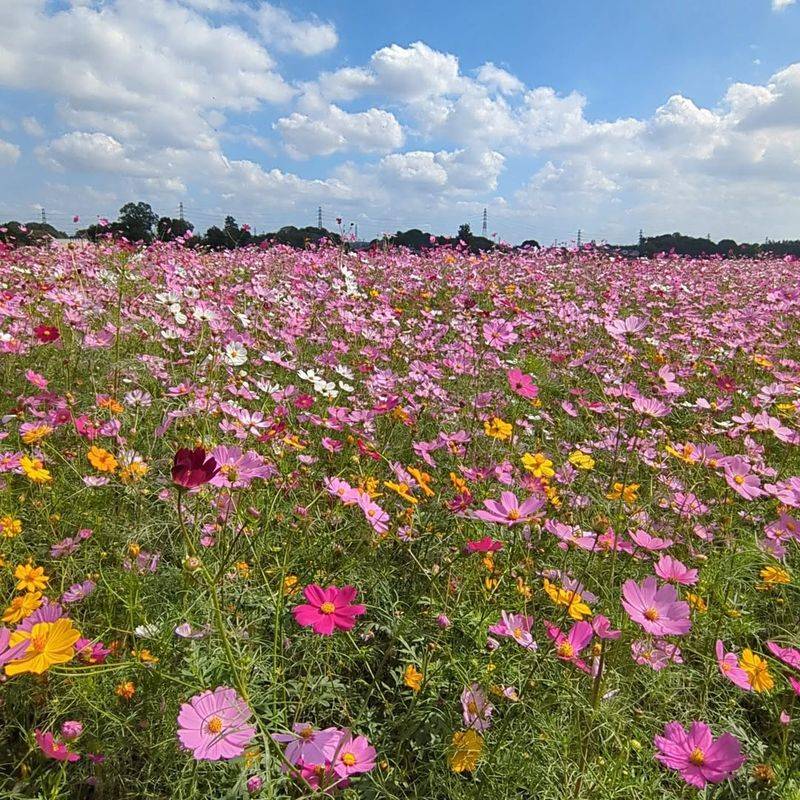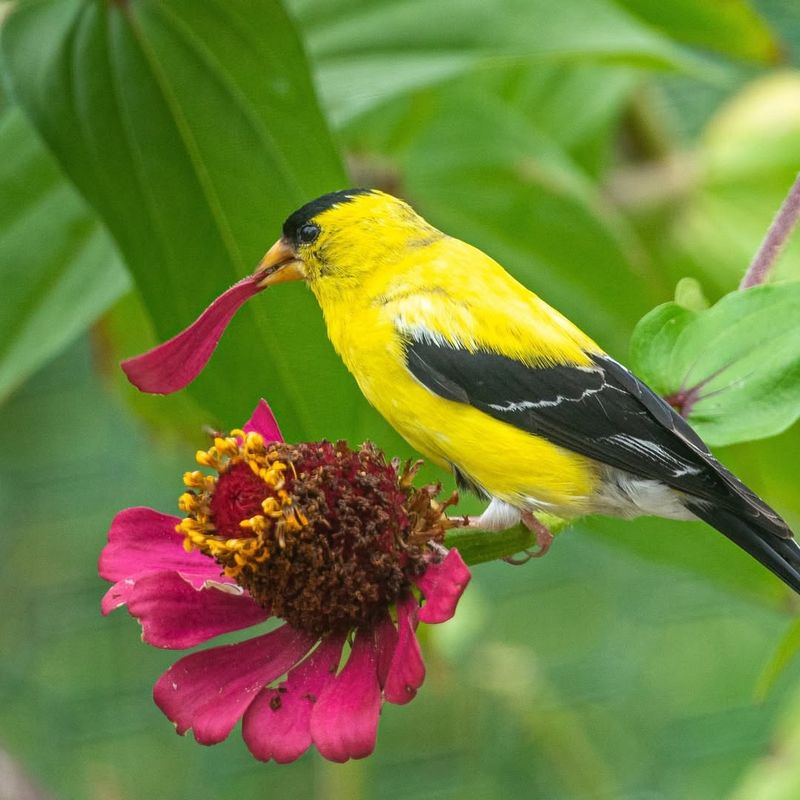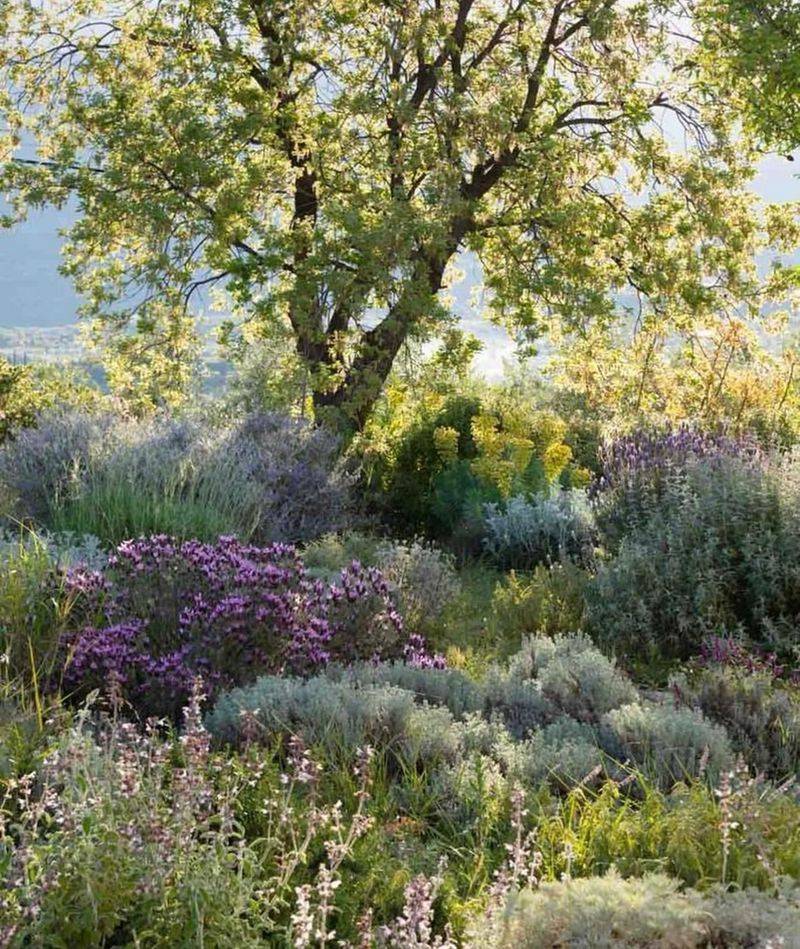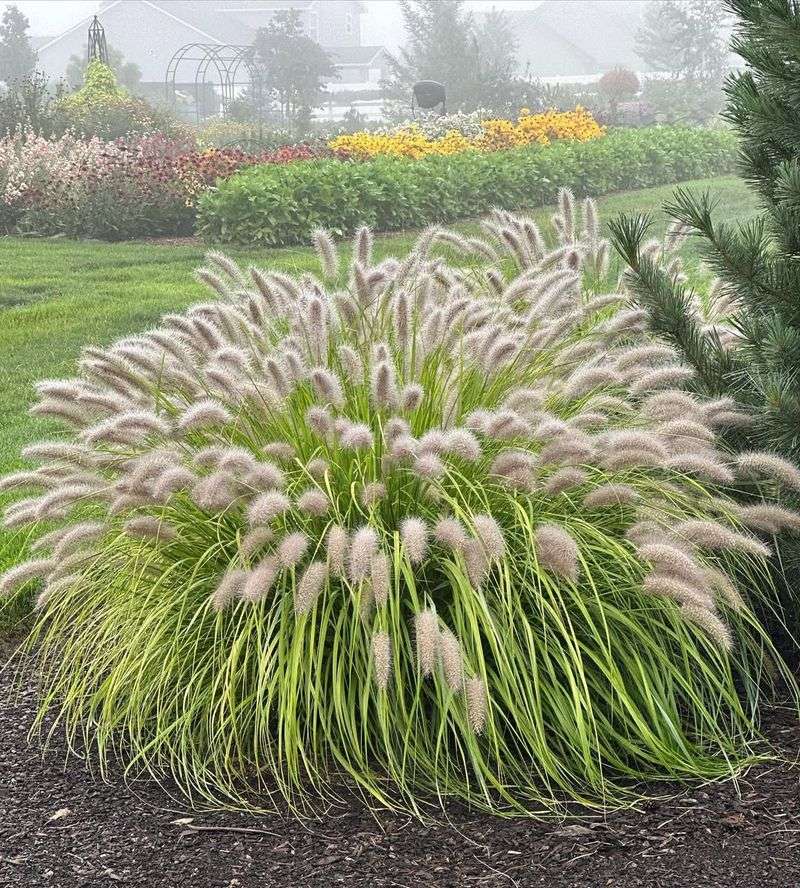Turning your garden into a butterfly-friendly zone is easier than you think. With the right plants—especially ones that bloom in April—you’ll have butterflies showing up and sticking around.
It’s all about giving them what they need: plenty of nectar, a few good resting spots, and a safe place to enjoy the sun. These 29 ways to create a pollinator haven will help you bring in more butterflies, keep them happy, and make your garden a buzzing, lively space.
1. Colorful Nectar Haven
A splash of color can do wonders. Fill your garden with a variety of blooms. Consider planting verbena, a favorite among butterflies. Its small, clustered flowers not only add aesthetic appeal but are also a rich source of nectar.
Butterflies love sipping nectar from these low-growing blossoms. Ensure you plant them in a sunny spot. This creates an inviting environment for these delicate creatures, providing them with both food and warmth. It’s a delightful way to see nature’s beauty up close.
2. Fragrant Butterfly Feast
Aromatic gardens attract not just people, but butterflies too. Incorporate sweet-smelling blossoms to tantalize their senses. Sweet alyssum is a great choice. This low-maintenance plant exudes a honey-like fragrance that butterflies find irresistible.
Plant them in clusters for both visual and aromatic impact. Their tiny blooms provide easy access to nectar, making your garden a favored destination. Who wouldn’t enjoy a garden that smells as good as it looks? It’s a feast for the senses and a habitat for butterflies.
3. Sunny Sanctuary
Sunshine is essential for butterflies. Create a sun-drenched sanctuary by planting sunflowers. These towering plants not only offer nectar but also act as a sunny rest stop for butterflies. Position them in well-lit areas where they can reach their full height.
With their large, bright faces, they beckon butterflies from afar. It’s a simple yet effective way to make your garden a butterfly hotspot. Is there a better way to harness the sun’s energy than with sunflowers? Let nature take its course.
4. Moisture Retreat
Water is as crucial as nectar. Installing a shallow water source can make a big difference. Consider a birdbath or a simple dish filled with wet sand. Butterflies drink from the edges, where they can also bask in the sunlight.
Surround these water features with nectar-rich flowers. This combination offers hydration and food in one go. Why not add some stones as landing spots? It’s a small yet thoughtful touch that butterflies will appreciate.
5. Sheltered Oasis
Windy conditions can deter butterflies. Create a sheltered corner with dense planting to protect them. Use shrubs and taller plants to form a natural barrier. Lantana works well as it offers both coverage and nectar.
Plant them in groups to maximize shelter and feeding opportunities. This approach makes your garden a safe and appealing location. Who wouldn’t want a cozy spot to relax in? Your garden can provide that for butterflies, ensuring they visit often.
6. Diverse Plant Palette
Variety is the spice of life, and the same applies to gardens. Incorporate different plant heights and colors to cater to various butterfly species. Zinnias are perfect for adding diversity. Their bright colors and varying heights make them an attractive option.
Plant them in mixed groups to provide a buffet of choices. Isn’t it exciting to see a garden full of life and color? With diversity, your garden becomes a butterfly paradise.
7. Perennial Paradise
Why not opt for plants that come back year after year? Perennials provide stability and structure. Coneflowers are a perennial favorite for butterflies. Their sturdy blooms offer long-term nectar sources.
Plant them in a sunny spot for best results. With minimal maintenance, they thrive and continue to attract butterflies. How rewarding is it to have a garden that renews itself? Perennials offer consistency and beauty for both you and your winged visitors.
8. Edge Appeal
Borders can be more than just boundaries. Transform them into active butterfly zones. Plant marigolds along the edges of your garden. Their bright, cheerful blooms act as a welcoming beacon. They not only add color but also serve as a nectar source.
Butterflies find them hard to resist. Isn’t it nice to have a garden that looks well-defined yet inviting? Edge planting can be both functional and beautiful.
9. Vertical Interest
Thinking vertically can add a new dimension. Climbing plants bring butterflies to new heights. Consider installing trellises with morning glories. These fast-growing climbers produce trumpet-shaped flowers filled with nectar.
They offer butterflies a place to rest and feed at various levels. Why stick to just the ground when there’s so much sky? Vertical planting expands your garden’s appeal and accessibility.
10. Seasonal Succession
Plan for constant bloom to keep the butterflies coming. Select plants that flower at different times. Columbine is a good starter for early blooms. Follow with a mid-season pick like black-eyed Susans, then asters for late blooms.
This strategy ensures food availability throughout the seasons. How satisfying is it to have a garden that evolves and changes? It’s like a live show that butterflies can’t resist.
11. Native Attraction
Support your local ecosystem by going native. Native plants attract native butterflies more effectively. Milkweed is a strong contender. It’s the host plant for monarch butterflies and provides crucial nectar.
Plant them in sunny patches for best results. Isn’t it fulfilling to help sustain local wildlife? Your garden can become a sanctuary for native butterflies.
12. Low Maintenance Lure
Who says beautiful gardens have to be high maintenance? Choose easy-care plants like lavender. It’s a win-win for both you and the butterflies. Their fragrant blooms are a magnet for nectar-seeking butterflies.
Plant them in well-draining soil for best results. Wouldn’t you love a garden that practically takes care of itself? Low maintenance doesn’t mean low beauty.
13. Scented Pathways
Paths can be more than just walkways. Line them with scented flowers for an aromatic journey. Dianthus is a solid pick for this role. These sweet-smelling blooms guide butterflies along their path. Plant them closely to form a fragrant trail.
Isn’t it charming to have a path that invites both people and butterflies? Scented pathways offer sensory delight and visual interest.
14. Small Space Solution
Limited space doesn’t mean limited beauty. Container gardening is perfect for small areas. Opt for butterfly bush in pots. These compact shrubs offer abundant nectar and are easy to manage.
Place them strategically for maximum impact. Who said you need acres to create a butterfly haven? Small spaces can pack a big punch with the right plants.
15. Color Contrast
Bring drama to your garden with contrasting colors. Plant purple and yellow pansies for a striking effect. This color combo catches the eye of butterflies and humans alike.
Position them in groups for maximum visual impact. Isn’t it thrilling to see a garden that pops with contrast? Color contrast adds excitement and allure.
16. Layered Landscaping
Think in layers for a multi-dimensional garden. Use plants of different heights to create depth. Start with tall hollyhocks at the back. Layer with mid-height phlox, and finish with ground-level violets.
This setup provides feeding and resting spots at various levels. What’s better than a garden full of levels and life? Layered landscaping enhances visual appeal and butterfly visits.
17. Leafy Rest Stops
Even butterflies need a place to rest. Broad leaves provide perfect rest stops. Hostas are ideal for this purpose. Their large leaves offer shade and shelter.
Plant them among nectar-rich flowers for a balanced habitat. Isn’t it thoughtful to consider resting spots? Leafy areas make your garden more inviting and practical.
18. Morning Glory Magic
There’s magic in the morning light. Morning glories open their blooms with the sun. Their trumpet shapes hold nectar perfect for butterflies. Train them on trellises for vertical allure.
Their vibrant colors and early blooming make them a garden highlight. Who could resist such a magical morning sight? Morning glories offer a warm greeting to your butterfly visitors.
19. Pollinator Party
Create a buzz with a pollinator party. Mix flowers that attract different pollinators, including butterflies. Bee balm is a top choice. Its tubular flowers are rich in nectar.
Plant in clusters for a vibrant scene. Isn’t it joyful to host a garden party for nature’s pollinators? More flowers mean more visitors.
20. Butterfly Buffet
Why settle for just one type of flower? Offer a diverse buffet. Coreopsis is a tasty option for butterflies. Their daisy-like blooms are rich in nectar.
Plant them alongside other favorites for a continuous supply. Isn’t a buffet more exciting than a single dish? Variety keeps butterflies coming back for more.
21. Symmetrical Delight
Balance is beautiful. Symmetrical planting adds order and appeal. Use salvia for a symmetrical flower bed. Their spikes of blue flowers offer nectar and structure.
Position them evenly for a harmonious effect. Who doesn’t appreciate a well-balanced garden? Symmetry brings peace and attraction.
22. Potted Perfection
Pots can be perfect for gardens. Move them around for changing views. Try geraniums in pots for butterfly appeal. Their bright blooms and easy care make them a favorite.
Position them at various heights for added interest. Who says gardens have to be fixed? Potted plants offer flexibility and charm.
23. Monarch Magnet
Some plants are true magnets. Milkweed is essential for monarch butterflies. It provides both food and a place to lay eggs. Plant them in sunny spots to maximize their growth.
Your garden becomes a critical stop for these majestic creatures. Isn’t it amazing to support such a beautiful butterfly? Milkweed makes it possible.
24. Herb Haven
Herbs aren’t just for cooking. Many attract butterflies too. Try parsley as a dual-purpose plant. It serves as a host plant for swallowtail butterflies and adds flavor to dishes.
Plant in sunny, well-drained spots. Who knew herbs could be so versatile? They offer culinary and ecological benefits.
25. Annual Attraction
Annuals offer vibrant, temporary beauty. Plant them for a season of color. Petunias are a bright option. Their funnel-shaped flowers are full of nectar.
Plant in masses for a colorful display. Isn’t it fun to change things up yearly? Annuals provide a fresh canvas each season.
26. Colorful Clusters
Strength in numbers applies to flowers, too. Cluster planting intensifies color and appeal. Group cosmos for a bold statement. These airy flowers provide nectar and movement.
Position them in sunny patches for best results. Who doesn’t love a garden full of concentrated color? Clusters create impact and attraction.
27. Bird-Friendly Blooms
Share the love between birds and butterflies. Choose flowers that attract both. Echinacea fits the bill. Their seed heads attract birds, while blooms offer nectar.
Plant in full sun for thriving growth. Isn’t it rewarding to support two types of wildlife? Dual-purpose plants enhance your garden’s appeal.
28. Mediterranean Magic
Bring a touch of the Mediterranean home. Some plants thrive in sunny, dry conditions. Lavender is a standout choice.
Its aromatic blooms attract butterflies with ease. Plant in well-drained soil for best results. Who wouldn’t love a garden with Mediterranean charm? It’s a slice of sun-kissed paradise.
29. Flowering Foliage
Foliage adds texture alongside blooms. Mix the two for a balanced garden. Try ornamental grasses with flowering plants.
The grasses offer movement and contrast, while flowers provide nectar. Plant in complementary patterns for harmony. Isn’t it beautiful to have both form and function? Foliage and flowers create a complete picture.

